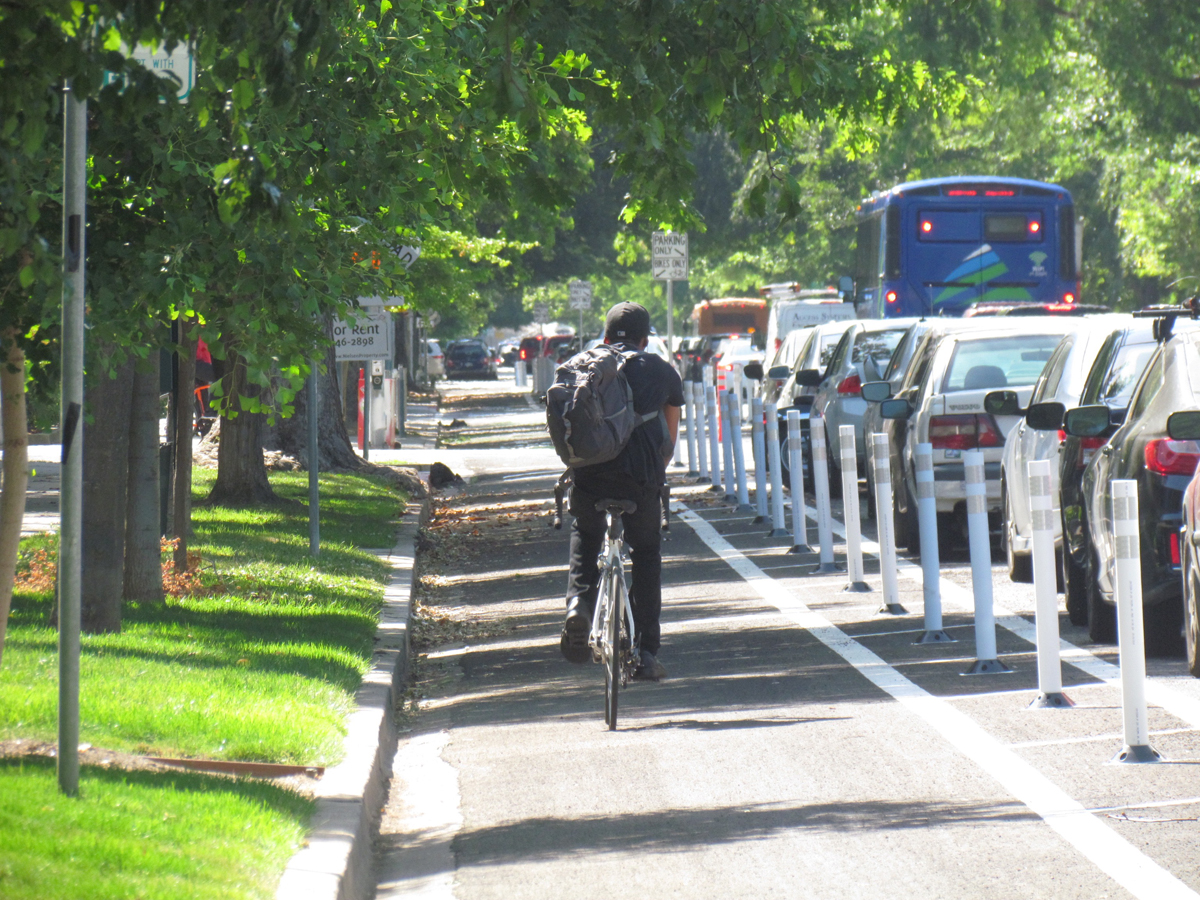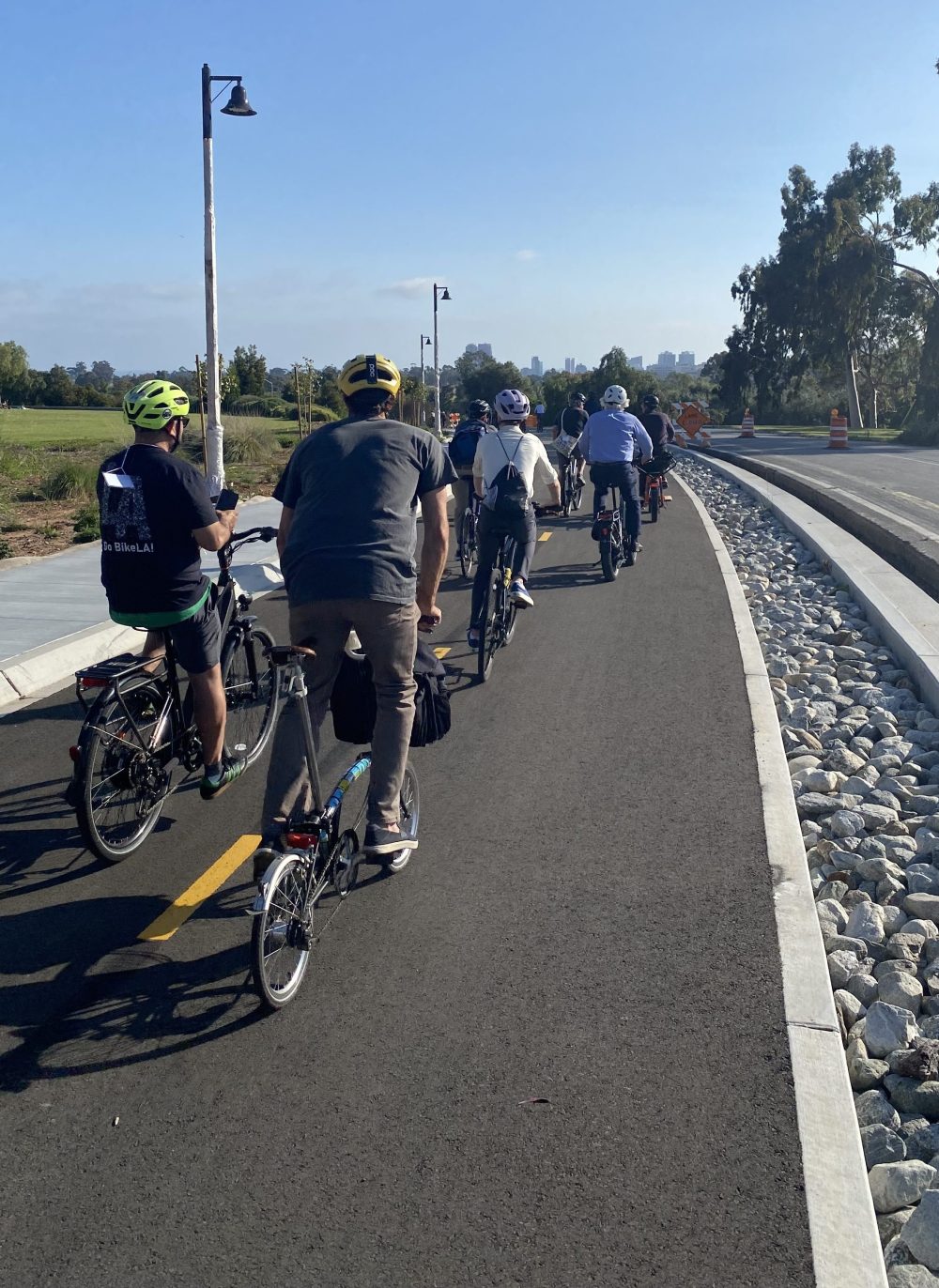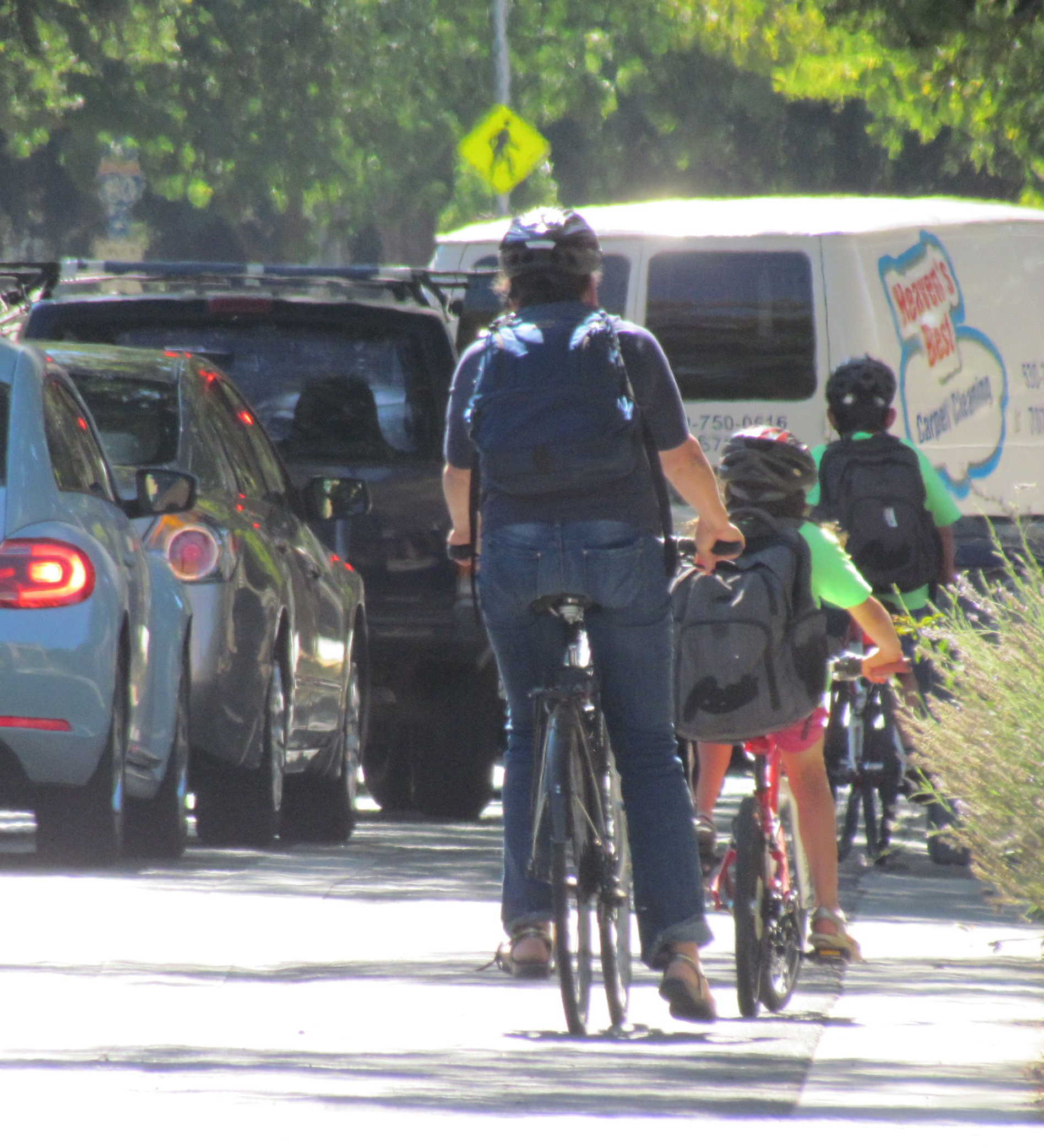This week the Sacramento City Council voted to adopt a formal, consolidated policy to guide planning, funding, and building Public Works projects towards creating safer streets for everyone. The city already had a nominal "complete streets" policy in place [PDF], much like Caltrans has a Complete Streets policy.
That was one of the arguments against this year's Senate Bill 127, which would have created a clear, statewide policy calling for Caltrans to build complete streets - that is, that a policy "already existed." But policies like these are weak. They outline no clear strategy for making sure they happen, and they allow too many exceptions for too many reasons.
Smart Growth America has been tracking and scoring the quality of Complete Streets policies adopted throughout the U.S. Recently they took a closer look, deciding that policies that look good but produce no change, or that don't prioritize the most vulnerable users, are a waste of time. They redid their scoring rubric and came up with a list of those elements that make a good Complete Streets policy.
None of the top ten Complete Streets policies of 2018 are in California.
Sacramento city staff took that to heart. They used that guidance to help create the city's new policy, which is meant to "provide direction for roadways to be planned, designed, and operated to enable safer, attractive, and comfortable access and travel for all roadway users, including pedestrians, bicyclists, persons with disabilities, seniors, children, motorists, goods movement, public transportation, and emergency responders."
And, it will not have any fiscal impact, according to the city.
This quietly made point is in reality a very loud statement. Caltrans, when faced with the potential passage of S.B. 127, claimed the policy would cost the state a billion dollars every year. So what's the difference? It is definitely, first and foremost, a clear case of priorities. Seeing safety for all users as an "added expense" rather than a basic requirement is a very blindly car-centric take on safety.
Matt Read, Chief of Staff for City Councilmember Steve Hansen - who put forward the proposed policy - says there are a couple of reasons Sacramento says its policy will have no fiscal impact. "It's about better aligning and clarifying the authority to do some of the things we're already doing, in a better way," he said. "Right now we have a somewhat frenetic approach to the question of what is a good street improvement... There should be standards. With this policy, we're not creating a new expensive thing, we're just being clearer about what we already call for."
In addition, he said, the city has found that a lot of the projects they have undertaken, including parking-protected bike lanes, "aren't particularly expensive. When a roadway needs work, accommodating bikes and scooters is just a matter of restriping, most of the time--which simply means redesigning the striping plan. And other elements, such as street-tree standards, already exist in our plans and policies."
Councilmember Hansen adds that it would be inappropriate to assign a fiscal impact to a policy "that does not move money." "When a state agency doesn't want something, they assess it with a huge cost impact to make it seem infeasible," he said. "It's a typical bureaucratic response at the state level. But at the city level we don't use that metric as a technique for bureaucratic obfuscation."
"Besides, doing it right the first time saves a tremendous amount of societal cost and public dollars. As my grandfather said, 'Buy a good tool once and you have it forever; buy a cheap tool and you have to replace it again and again.' "
Hansen said he had asked for this policy change in 2016. "It's taken a lot of time and effort to get our city to this place," he said, "and to get other voices on the council to agree that this is a priority." City staff has been working in earnest on it for several years, and various advisory groups like the Disability Advisory Commission, Walk Sacramento, and Sacramento Area Bicycle Advocates have been pushing for it.
The new policy has several aspects that make it much stronger than the previous piecemeal approach to Complete Streets. It outlines a clear work plan for implementation, requiring the Public Works Department to review all of its plans, manuals, checklists, and rules, and to update its design standards, pedestrian crossing guidelines, and work zone detour policy. It calls for professional development and training of city staff so they understand best practices and why these changes are important.
The policy allows flexibility in how the concepts are applied, but exceptions are limited.
The policy applies to city projects as well as to private developments within the city. It includes performance measures and reporting requirements to track the city's progress. It calls for considering who is served by its projects, including "people of all ages, races, ethnicities, incomes, and physical abilities, and all modes of transportation, including walking, rolling, biking, scooting, transit, goods movement, and vehicles (including support for electric vehicles)" while prioritizing "vulnerable roadway users and those residing in disadvantaged communities."
While the written policy is short [PDF], it is very specific about what needs doing in the next year. It reads:
The City of Sacramento shall approach every transportation improvement and project phase as an opportunity to apply a Complete Streets framework to create safer, more accessible streets for all roadway users, while upholding the City’s Design Procedures Manual.
Hansen points out that of course it means aligning with funding as well. "Every dollar we get from state and federal sources and from development fees is all in service of the greater good, which is complete streets," he said.






